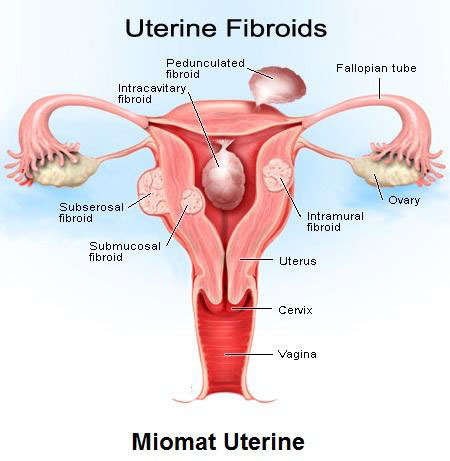Myomectomy
What is myomectomy?
Myomectomy is the term for the surgical procedure that performs the removal of uterine fibroids while preserving the uterus. This procedure can be performed through open surgery (laparotomy – opening of the abdomen) or through closed surgery (laparoscopy – which does not require opening of the abdomen or hysteroscopy). Hysteroscopy is used in cases where fibroids grow or protrude into the uterine cavity.
Usually, myomectomy is recommended for women who want to have children. In cases of fibroids that meet the criteria for surgical treatment, but who do not wish to get pregnant or are of a very advanced age, then hysterectomy is advised.

Characteristics of myomectomy
Myomectomy is a surgery that lasts longer than hysterectomy, and usually has more bleeding than the latter. Patients will have considerable pain for 3-10 days after the operation.
Understandably, in the case of laparoscopic myomectomy, post-operative pain is more reduced.
In the case of hysteroscopic myomectomy, post-operative pain is negligible.
How long is the hospital stay?
The hospital stay depends on how the myomectomy is performed: with laparoscopy or laparotomy.
- Usually, when myomectomy is performed with laparoscopy (closed surgery, no opening of the abdomen), the hospital stay is only 48 hours.
- If myomectomy is performed with opening of the abdomen (laparotomy), then the hospital stay is longer, usually 4-5 days.
- When myomectomy is performed with hysteroscopy, the hospital stay is only 24 hours.
How long is the recovery from the operation?
Recovery after myomectomy with laparotomy usually requires 2 months. Only after such an interval is returning to work and to the physical activity that the patient had before the operation advised. During the first 6 months after the operation, lifting weights is not advised because open surgery can be complicated with hernia if physical activity is started too early.
Recovery is much faster in the case of myomectomy with laparoscopy and does not present the aforementioned risks.
Side effects and safety of the procedure.
Being a somewhat more invasive surgical procedure than other surgical procedures, myomectomy can be somewhat more often complicated by various complications. Among the possible complications we mention:
- Urinary tract infections (urinary bladder / kidney).
- Infections at the wound level.
- Deep vein thromboses – are common in gynecological surgery. It refers to blood clotting inside the veins (usually in the leg) that risk spreading towards the lungs, heart, etc.
In the case of laparoscopy and hysteroscopy, these risks are minimal.
Usually, complications do not exceed 10% of cases.
Long-term effects
- Myomectomy is very effective in removing existing fibroids, however, it cannot prevent the appearance of other fibroids in the future. This means that if another fibroid appears, then you may need another operation.
- Myomectomy can also cause adhesions (stickiness) of the internal organs of the abdomen (omentum, ovaries, or intestines) on the wound of the uterus created by the removal of the fibroid. This can occur in 25% of cases and the patient may complain of lower abdominal pain for a long time after myomectomy, even though ultrasonically no problem appears.
- If a pregnancy occurs after myomectomy, then the delivery should be done via cesarean section.
Effects on fertility
In cases where fibroids cause infertility, myomectomy increases the chances for a pregnancy and minimizes the chances for miscarriage.